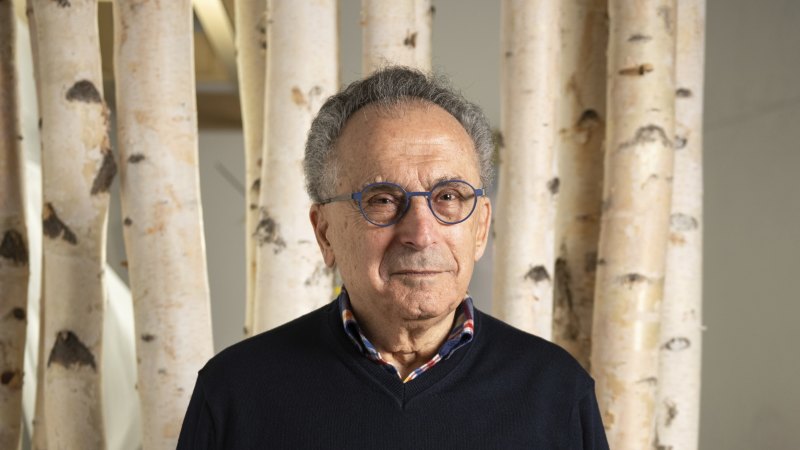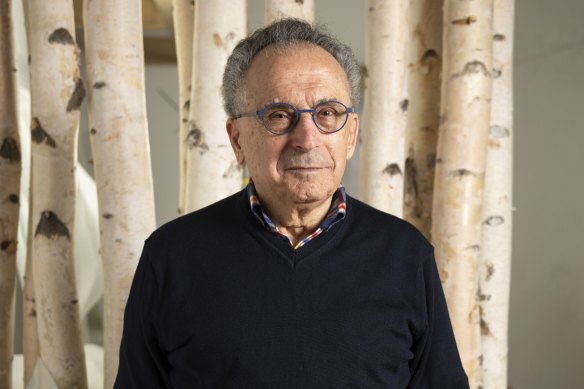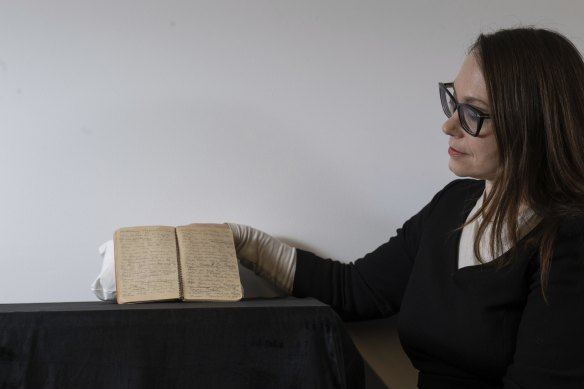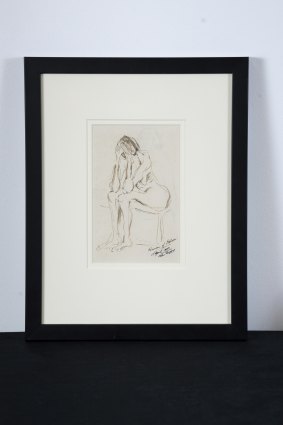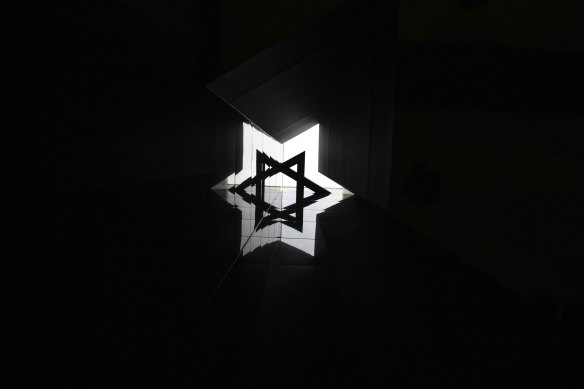Save articles for later
Add articles to your saved list and come back to them any time.
Holocaust survivor Peter Gaspar believes he is alive today because of his father’s Christian friends, domestic staff and colleagues, who hid the Jewish family after the Nazis occupied Bratislava in what is now Slovakia.
“We hid in people’s homes for 2½ years in their cellars and attics and roof cavities and in their cupboards and garden sheds,” said Gaspar, 86, who immigrated to Australia with his parents in 1949.
Holocaust survivor Peter Gaspar speaks with students who visit the Melbourne Holocaust Museum.Credit: Penny Stephens
“In 2006, I took my wife, two children and a grandchild to see these people because I wanted them to see who they owe their life to.”
Gaspar is part of an education program in which Holocaust survivors speak to students at the Melbourne Holocaust Museum in Elsternwick.
The museum, formerly known as the Jewish Holocaust Centre, was founded by Melbourne Holocaust survivors in 1984 seeking to combat antisemitism, racism and prejudice in the community.
The museum closed in 2020 for a major redevelopment by Kerstin Thompson Architects and will reopen to the public in October.
Melbourne Holocaust Museum chief executive Jayne Josem in the redeveloped building.Credit: Penny Stephens
Gaspar said his focus was not on the horror of the Holocaust, but the importance of standing up to prejudice.
“The people who stood up were upstanders instead of being bystanders,” Gaspar said.
“The Holocaust didn’t start with gas chambers and murders and executions. It started with stereotyping, prejudice, discrimination, hate speech; and once people were conditioned to hate, then came the very systematic, industrially organised murder.”
The redeveloped museum will include a dedicated exhibition called Hidden for children aged 10 to 14. It tells the stories of seven Melbourne child survivors who were concealed during World War II.
Dr Anna Hirsh, the museum’s collections manager, with Trude Leipnik’s diary.Credit: Penny Stephens
The permanent display – Everybody had a name – features multimedia testimonies from people who were forced to live in ghettos or concentration camps.
The diary of Trude Leipnik, who was imprisoned at the Bergen-Belsen concentration camp in northern Germany, is exhibited along with an animation depicting a traumatic 10-day journey from one camp to another that she described in her journal.
“We’ve brought it to life through multimedia, so it makes it more accessible for a visitor to understand,” museum chief executive Jayne Josem said.
“It tells of how one woman and her two children were dehumanised and transported from one place to another without any choice or agency.”
Also on display is a haunting sketch of an emaciated prisoner by Australian war artist Lieutenant Alan Moore, who was embedded with the British Army at the liberation of Bergen-Belsen.
“Alan Moore’s drawing of this woman also includes this ghostly image, which if you look hard enough looks like how this woman could have been before all these terrible atrocities,” said Dr Anna Hirsh, the museum’s manager of collections. “Sadly, she died a few hours after he drew her.”
Kerstin Thompson Architects included mirrors and views of the outside world – the sky, clouds and rooftops – in its design to provide relief for those affected by the museum’s harrowing content.
The sketch of a concentration camp prisoner by Australian war artist Alan Moore.Credit: Penny Stephens
“Stephen Jolson, who did the fit-out for the memorial space which has a view of the sky, said his grandfather, a Holocaust survivor, told him how important the sky was in concentration camps as a connection to nature and to life,” project lead Anne-Claire Deville said.
The museum also features glass bricks, a reference to Kristallnacht – the Night of Broken Glass – when the windows of Jewish-owned shops and synagogues were smashed throughout Germany in November 1938.
Exhausted after years of hiding, Gaspar’s parents decided to turn themselves into Nazi authorities in the winter of 1944.
Gaspar’s father was forced to work as a slave labourer in the Sachsenhausen concentration camp in northern Germany, while Gaspar and his mother were sent to Terezin, also known as Theresienstadt, a camp in what was then Czechoslovakia.
However, the war ended five months later and they all survived – something Gaspar believes would not have occurred without the families who hid them for so long.
Forty members of Gaspar’s extended family, who were arrested in June 1942 and deported to Auschwitz, were killed.
A skylight at the Melbourne Holocaust Museum.Credit: Penny Stephens
Gaspar said it was stimulating and rewarding to speak to students.
“They ask questions I never imagined they would ask. A student asked me, ‘Have you lost your faith as a result of the Holocaust?’ I had to think for a moment and had to answer, ‘No, I haven’t, because I didn’t have any faith.’ We were Jewish but totally non-observant.”
After education programs at the museum, students are asked to write what was memorable about their visit.
“They say, ‘I will remember to be an upstander’, I will remember not to have prejudice’,” Gaspar said.
“It’s making an impression on students. That is the purpose of the museum – to educate against hate.”
A special tour of Melbourne Holocaust Museum, before its public opening, will be held during Open House Melbourne Weekend on July 30. The museum exhibition spaces are still under construction and will not be part of the tour. Bookings are essential and can be made here: https://openhousemelbourne.org/event/melbourne-holocaust-museum/
The Morning Edition newsletter is our guide to the day’s most important and interesting stories, analysis and insights. Sign up here.
Most Viewed in National
From our partners
Source: Read Full Article
